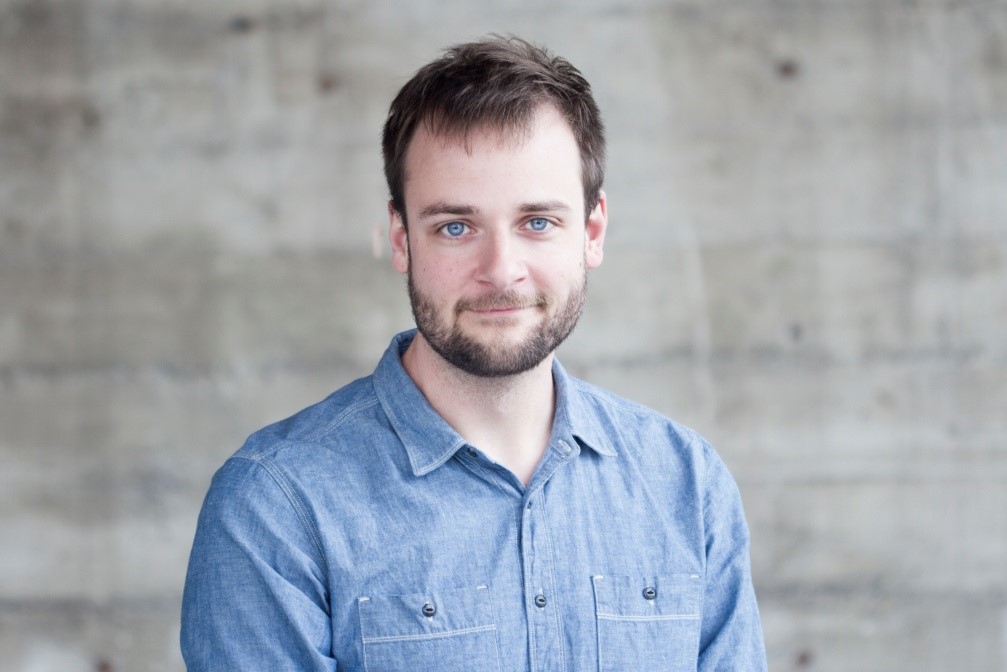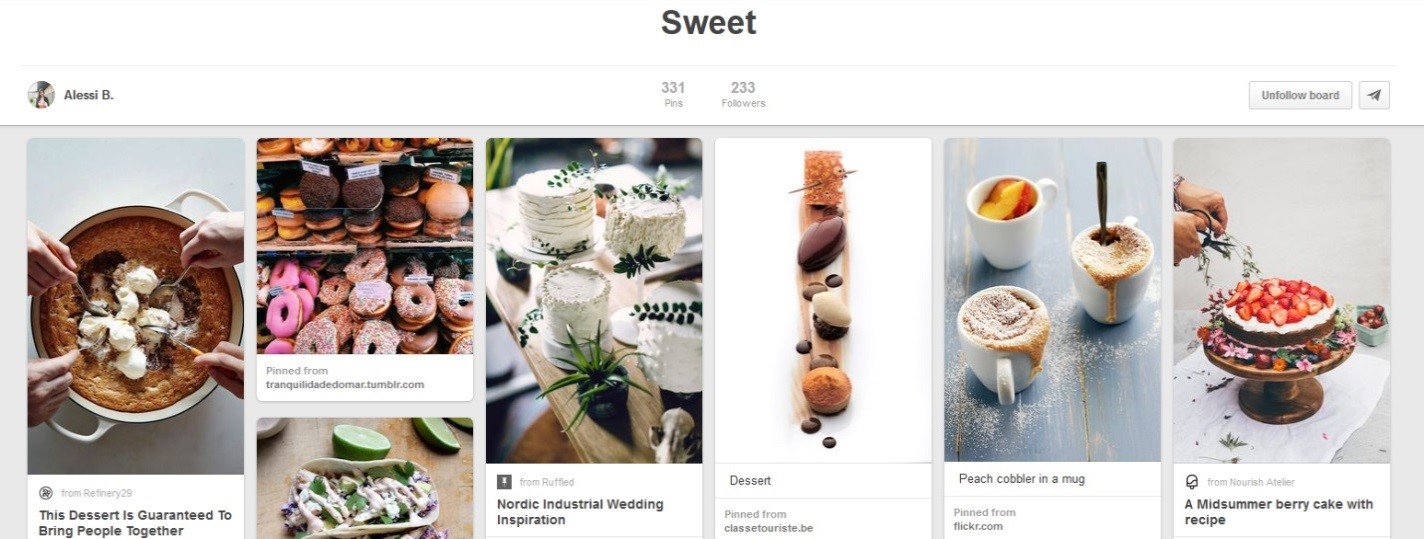The World’s Premier Visual Discovery Tool: The Inspiring Story of Pinterest
Looking for the latest fashion looks, home décor tips, or wedding gown trends? Interested in sharing great designs, recipes, and photography? To inspire and be inspired, many creative professionals and netizens are flocking to Pinterest.
Unless you’ve spent the last five years smothered under a vintage hand-quilted comforter, you’ve probably heard of Pinterest—a visual bookmarking tool that now ranks among the top social media sites in the United States (along with Facebook, Twitter, and LinkedIn). Co-founded in March 2010 by Ben Silbermann, Paul Sciarra, and Evan Sharp, Pinterest’s American user base is expected to reach 47.1 million this year, up 11.4% year over year, according to the latest report from eMarketer (@eMarketer).
According to comScore (@comScore), from March 2014 to March 2015, Pinterest’s user base climbed 25% year over year, and the company now boasts 72.8 million monthly active users. Though only 30% of its users are currently from outside the United States, Pinterest is seeing growth in foreign markets, such as the United Kingdom, South Korea, and India.
It took only two years for Pinterest to attract millions of users from around the world. Launched as a closed beta in March 2010, and originally open to a small group of colleagues and family members, Pinterest rapidly grew from 5,000 users in August 2010 to 17 million users in April 2012.
On the other hand, how did a photo-sharing website achieve growth so rapidly—to the point that it is now valued at $7.7 billion? According to Pinterest co-founder, Evan Sharp (@eshp), Pinterest’s appeal rests on the fact that it is “not a social network”. Instead, he refers to Pinterest as a “great tool for discovering creative ideas and saving them for later”.

Figure 1: Evan Sharp (Source: Pinterest’s Press Page)
“We’re very recommendations and search-focused,” explained Sharp. “It’s a service that should become more valuable the more you use it, and more specific to your taste or your interests.” Does that make Pinterest more of a search engine than a social networking site? Umm—yes and no.
“People don’t think of Pinterest as search, necessarily, and that’s partly the design of the service: the way it’s laid out, but we’re a huge search engine. A massive search engine, and it’s very different type of search to Google or Yahoo,” asserted Sharp.
That might sound very deep, but what exactly do Pinterest users (known as “Pinners”) do on Pinterest?
Pinterest’s main commodity are so-called “Pins,” which “can be almost anything—a gift, recipe, or even a quote.” Pins are collected and organized into “Boards,” with each Board telling a “unique, hand-crafted story about what that person cares about.” As shown in Figure 2, Boards can follow any theme or topic (such as “Sweets”). Aside from being able to follow Boards that they like, Pinners can also pin things that they like to Pinterest (using the “Pin It” button).

Figure 2 (Sources: Alessi B./Pinterest)
Meanwhile, Pinners interested in content discovery can use Pinterest search to discover new things.
From Building Startup Apps to Creating the World’s Premier Visual Discovery Tool
Ben Silbermann (@8en), the co-founder and CEO of Pinterest, was the man behind the online phenomenon that would forever change how netizens discovered and curated visuals. During a keynote speech at Alt Summit 2012 in Salt Lake City, Utah, Silbermann talked about his early years and subsequent development (in case you’re wondering, he’s only 31-years-old).
Born and raised in Des Moines, Iowa, he dreamed of becoming a doctor as a child, started his career in Google, shifted careers, and launched his startup during the economic crisis. While men of lesser stuff might have given up amidst the struggles, Silbermann only grew more determined to push forward with his dreams and achieve fruition.
Silbermann took up science classes in Yale in preparation for the medical school entrance exams. However, in junior year, he abruptly decided to go into “business”. On his last year in college, he applied for consulting jobs, and after graduation, was accepted at a large D.C. management consultancy named Corporate Executive Board. He worked hard as a consultant, making spreadsheets all day. However, Silbermann could never shake off the feeling that he was “in the wrong place”.
Then in the mid-2000s, social media emerged. Silbermann became obsessed with social media and immersed himself fully in tech blogs. He followed the beginnings of Digg, MySpace, YouTube, and Facebook. He was amazed at how the Internet could connect people through new or shared ideas, as well as common interests.
After moving to the West Coast with his girlfriend, he did customer support in Google’s AdSense division. The job at Google was not very different from his previous consulting job (once again, he handled lots of spreadsheets). According to Silbermann, the reason he got the job at Google, was because he showed more enthusiasm than the previous applicant. Silbermann told the interviewer that Google was a “special place” with visionary co-founders who launched ambitious projects, like taking pictures of every street in the world and putting it online.
However, once installed in his cubicle, the rumblings of discontentment continued. He was frustrated because Google wouldn’t let him build the products he’d begun to envision. Eventually, his girlfriend told him to stop complaining and focus on pursuing his vision.
Silbermann made a momentous decision and quit his job at Google. However, a week later, the recession struck. Friends who were supposed to quit and join him chose to remain at Google. Undaunted, he tried to raise money to fund research and product development, but had a hard time getting funding from wealthy donors.
Eventually, Silbermann was joined by Paul Sciarra (@sciarra), a friend from college who was living in the East Coast. They established Cold Brew Labs in 2008. (Cold Brew Labs focused on building social commerce applications.) The “Tote” app was the company’s first product.
Tote was a mobile shopping app that allowed online shoppers to browse products from stores, save products, share their favorites with friends, and receive notifications about price drops. Its tagline was “Tote your favorite things,” which bears some similarity to Pinterest’s “Organize and share things you love.” Unfortunately, Tote was not successful.
“Everything seemed really hard. We couldn’t get money. Apps had just been released so the approval process was taking months,” recalled Silbermann. While he wasn’t feeling hopeless, he felt pressured by two things: 1) He didn’t want to go back to Google, and 2) He didn’t want to let Sciarra down.
Pinterest was their second attempt. The first iteration focused on collections and curation, with Silbermann referring to a childhood bug collection as “Pinterest 1.0”. [See Figure 4]
Evan Sharp, a former product designer at Facebook, completed the triumvirate of Pinterest’s co-founders. Sharp joined the team after Silbermann and Sciarra created the first iteration of Pinterest. Sharp came up with the grid layout for Pinterest, which was achieved by removing the rigid organizational structures imposed by the Web: directories, time stamps, pagination. The resulting grid was more seamless, and was designed to appeal to users who loved going to museums and window shopping.
From Small Beginnings, Pinterest’s User Base Expands by Leaps and Bounds
Though Silbermann sent invitations to friends and family after launching Pinterest, at first, interest was minimal. Slowly, though, Pinterest’s user base started to expand. Early users were mostly from Silbermann’s hometown. (Silbermann suspected that his mom had told all her patients to join Pinterest.)
Things started to heat up when popular blogger, Victoria Smith, helped organize a program called “Pin It Forward” using her blog, SFGirlByBay, in May 2010. Pin It Forward used a “chain letter,” which allowed bloggers to exchange pin boards about what home meant to them. The program gradually added more users who began creating different pin boards like maps, tour guides, and “Things That Look Like The Death Star.” Later on, Smith—now the company’s community manager—organized the first Pinterest meet-up. With a community in place, Pinterest’s user base gradually expanded into regional and international markets.
Pinterest Isn’t Just for Ladies—Gentlemen are Starting to Love Pinterest, too
While Pinterest has had a longstanding reputation as a female-oriented social media site, the company has taken steps to change the public’s gender perception of the site. According to eMarketer, men are also active on Pinterest, and there is a 50-50 gender split in India, South Korea, Japan, and Brazil.
Pinterest has taken the time to highlight the site’s male users and their “masculine interests”. Men now use Pinterest to get GQ-style fashion tips, access useful home improvement guides, and explore hiking trails around the world, among other pursuits.
Pinterest Releases Promoted Pins and Buyable Pins
Aside from expanding into foreign markets and breaking down gender stereotypes, Pinterest has begun to monetize its service with the launch of Promoted Pins and Buyable Pins. Promoted Pins are the company’s first native ad product and look just like regular Pins (though advertisers have to pay to have them seen by more people).
Pinterest claims that Promoted Pins perform just as well, and sometimes even better, than organic Pins. Promoted Pins can be used to drive marketing goals, like awareness, traffic, and engagement.
Hot on the heels of Facebook and Twitter’s aggressive monetization efforts, Pinterest recently launched Buyable Pins—a simple, secure way for Pinners to buy products on Pinterest. “Given Pinterest’s ambitions in search and discovery, it may end up competing more directly with Google and Amazon.com than Facebook and Twitter,” notes the eMarketer report.
Whatever direction Pinterest eventually takes, one thing remains clear: Silbermann’s refusal to accept setbacks and his willingness to overcome adversities is bound to inspire innovative designers and entrepreneurs for years to come.
Marketing Digest Writing Team
Latest posts by Marketing Digest Writing Team (see all)
- How Taco Bell Struck Gold with Its Memorable Viral Marketing Campaigns - September 15, 2015
- Salesforce Marketing Cloud Releases New Instagram Marketing Tools - September 12, 2015
- Chrome Begins Pausing Flash Ads by Default to Improve User Experience - September 3, 2015



